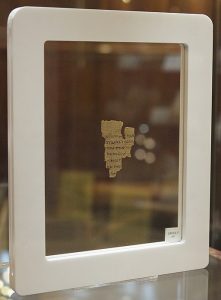The Gospels

What is a Gospel and how to read it?
The word Gospel comes from the Anglo-Saxon term god-spell, meaning “good story,” or “good news”, which is related to the Latin evangelium and the Greek euangelion, meaning “good news” or “good telling.” So both the concept of Gospel as Good News and the concept of Evangelism as telling this important story to others come from these very old terms, originating from 3 different languages. “Gospel” as a noun referring to a literary genre was not really used until the 2nd century.
The gospels are written from a post-resurrection perspective, offering a story concerning the ministry, death and resurrection of Jesus of Nazareth. Each gospel has a unique perspective–which will be addressed in the next section–and was written for a unique audience. Mark was written some time between 60-70 CE, Matthew and Luke sometime between 80-90 CE and John sometimes after 90 CE. All, then, are first century writings, but written well after the time of Jesus, who was crucified in about 30 CE. It is interesting, given the unique approaches of each gospel, that they all were considered vital to the canon of the church. There are other gospels than these canonical gospels that were popular for a time, but which were not ultimately included in the final authoritative list of scripture for the early church. So it is important to understand what the real point of each gospel really was.
Popular opinion may think that the Gospels are biographies of Jesus, but they are not biographies, at least not anything like the modern biography. There is very little of a personal portrait of Jesus in the Gospels. There is nothing known about how he developed, how he went from being a child to a teenager to being a prophet. There is very little about his relationship to his parents, nothing in relation to his brothers and sisters, so truly nothing known that a modern biography would automatically be expected to include. But is all that actually the important part of this story?
How to read the Gospels? Looking for truth…
It is important to learn to read the Gospels in modern times by using the method of historical criticism. The “criticism” part of that phrase doesn’t mean one is somehow criticizing the text, it just means that reading it with careful eyes, even with questioning eyes at times, is important. It is critical to read these texts not for what they say about actual events in the past, but as documents written by authors who had important points that they wanted to make. It is important to understand that the writers tell the story the way they tell the story because they have a specific message to offer to the reader. So the big question is not “What really happened?” for modern scholars (most of the time) as they look at a gospel. Scholars instead ask “What did the author want to do in this gospel?”
It is not that the historical critical method is the only correct method of analysis. It’s perfectly legitimate for Christians to read these texts to get something religious out of the text for their lives, to find personal guidance, identify doctrine, gain images of Jesus, help their relationship to God, and so forth. But a theological reading of the text is not the same thing as a historical critical reading of the text, and in this textbook, materials are explored using historical and literary critical methods.
The literary ways of reading these texts have been very common in English departments. This method asks, for example, that people look for the plot of a gospel, identify the way it accomplishes its story. Are there figures and characters in the story, and what kind of thing do the characters represent, or what does a specific event represent symbolically? Just as one does a literary reading of a novel, some modern scholars will do a literary reading of the Gospels. This is also a perfectly legitimate way to read the Gospels.
Historical criticism asks, “What kind of theological message was this original writer intending to give in the gospel and to whom was he intending to give it?” This is an important question, but it is not the only concern scholars have while reading a gospel.
It is important to read each gospel as a stand alone text, so, for example, to read Mark as Mark by itself. One of the fundamental rules of historical criticism is– don’t harmonize different texts in the Bible. Take them each individually.
Another key point about historical criticism is that the reader is not to attribute a meaning to the text that doesn’t make sense in the first century in its own context. Don’t overlay modern ideas onto a 1st century CE manuscript!
For example, as a Christian, some of the Psalms in the Hebrew Bible get read as being about Jesus. When the Psalmist says, “The Lord said to my lord, Sit at my right hand and I will make your enemies your footstool.” Christians have traditionally said the first “Lord” there is God, and the second “lord” is Jesus, and this is an Old Testament reference to God the Father and God the Son. This makes reading this Psalm a theological way of reading the Psalm. It doesn’t pass the test of historical criticism because historians will point out that the original Psalmist didn’t know anything about Jesus. He wasn’t prophesying about Jesus personally, he was talking to David the King or to David’s descendants who sat on the throne of Judah, so the first Lord is God, and second, the king.
Anachronism has to be avoided in historical critical readings–so don’t put things into the text that are not there.
In each gospel, then, Jesus is encountered as he is presented by that gospel writer. Each Jesus may seem a little different to the reader, and that is clearly intentional on the part of the individual writers. Take a minute to listen to Dr. Jennifer Bird’s[1] presentation about the different portraits of Jesus in the canonical gospels.
The Essences of Jesus

“‘Essences of Jesus’–Jennifer Bird, Phd.” Portland Community College, 27 Mar. 2019, https://youtu.be/bZQnbIBXzY0.
“”‘Truth’ in the Bible’–Jennifer Bird, Phd.” Portland Community College, 12 Aug. 2019, https://youtu.be/zi032SvHLFw.
Dale Martin, Introduction to the New Testament, Yale University: Open Yale Courses, http://oyc.yale.edu. License: Creative Commons BY-NC-SA . Most of the lectures and course material within Open Yale Courses are licensed under a Creative Commons Attribution-Noncommercial-Share Alike 3.0 license. Unless explicitly set forth in the applicable Credits section of a lecture, third-party content is not covered under the Creative Commons license.
May, Herbert G., et al. The New Oxford Annotated Bible with the Apocrypha: Revised Standard Version, Containing the Second Edition of the New Testament and an Expanded Edition of the Apocrypha. Edited by Michael D Coogan, Oxford University Press, 2007.
- Growing up in Roanoke, Virginia, former Associate Professor of Religion Jennifer G. Bird has recently relocated to Portland, OR. She is currently working on her second book, Permission Granted, and speaking and teaching on matters related to gender, sexuality and power within the texts of the bible, especially from the letters of the New Testament. Her first book, Abuse, Power and Fearful Obedience: Reconsidering 1 Peter’s Commands to Wives, was recently assigned at Harvard Divinity School. Her undergraduate degree is a BS in Mathematics, with an Education Minor, from Virginia Polytechnic Institute and State University (1994). After two years training with an international para-church organization, Young Life, and a cross-country "happiness move" to Portland, OR, she found herself applying to seminary in order to study biblical languages and look into what the bible says about women. With an MDiv from Princeton Theological Seminary (2001), she began PhD work in New Testament and Early Christianity and finished that degree from Vanderbilt University in Nashville, Tennessee (2007). She grew up in a family that was active in a United Methodist Church congregation, was a summer youth leader during college, had two internships during seminary at Presbyterian churches in New York City, and a one-year part-time position at First Presbyterian Church, Waco, Texas. Throughout her ten years in Nashville, Tennessee and Greensboro, North Carolina, she sought out opportunities to teach classes crafted for local churches. Her post-baccalaureate teaching experience began in her final year at Princeton Theological Seminary, and included TA positions or full teaching responsibilities for Koine Greek throughout PhD coursework and writing. Her most recent full-time position was for six years at Greensboro College in Greensboro, North Carolina. While writing and speaking on both coasts, Jennifer is an adjunct professor for Portland Community College and University of Portland. ↵
belonging to a period other than that being portrayed.
